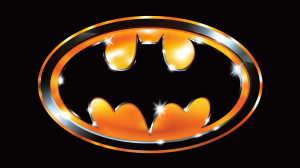One of the more unfortunate aspects of anime video games is that they are often a mixed bag, depending on which franchise you’re diving into. Even the most popular action anime series can suffer a poor adaptation as it can be difficult to translate every unique aspect of a franchise into a game world. My Hero Academia got its first big shot with My Hero One’s Justice, which took series creator Kohei Horikoshi’s extended roster of heroes and villains and placed them all into an action-filled brawler. Now with more characters and battles introduced in the fourth season of the anime, this brawler has made a comeback.
Videos by ComicBook.com
Taking influence from the second half of the third and first half of the fourth season of My Hero Academia‘s anime, My Hero One’s Justice 2 is stacked to the brim with tons to do for fans of the series. While it may not keep fighting game die-hards completely enthralled the entire time, there is a fun core building on the first title that’s sure to lead to hours of fun with friends.
My Hero One’s Justice 2 switches up the arena brawler format a bit with its full 3D space for players to dash around and battle in. You can fight on the side of buildings (even getting your opponent stuck in them as an extra way to deal damaging combos), and jumps feel fluid, fast, and flighty. There are standard attacks, quirk boosted attacks, and heavy attacks that can all be chained into combos, and thus leads to an almost rock-paper-scissors like exchange with opponents to see who hits who.
The sequel changes things up even further by adding a stamina bar that balances how much you can dash around this time, but it refills at a rate that never feels like it’s cumbersome. Landing successful combos can make you feel like a superhero as they deal a great amount of damage and look cool at the same time. The only problem is the camera, which can be a bit difficult to work around walls and other obstructions when playing with friends.
There’s also the ability to fight one on one or with two assist characters, but this time around you can use an assist’s super move at the cost of one of your own bars. There are three levels of super moves for each character, but it’s rare that you’ll see the top-tier version as super meter tends to take quite a long time to fill if you’re not on the receiving end of combos. So if you’re good at brawling, expect to see a lot of first-tier supers.
Surrounding this fun core fighter is a wealth of other activities and customization options. There’s a story mode that recounts the events of the final half of the third anime season up to the end of the fourth season’s Shie Hassaikai arc from both the heroes’ and villains’ perspectives. It won’t be easy for non-fans to jump into as there is very little packaging around each fight (with a few anime stills delivering an abridged version of events), and fights aren’t very challenging, but it’s a good way to figure everything out!
That’s the main issue with My Hero One’s Justice 2. There’s a ceiling to how much you can dig into its fighting, and while there are missions to play through and tons of custom costume pieces to unlock, the balance to the challenges can throw everything off. If you’re playing alone the CPU can either be too easy or too frustrating, but that’s all alleviated with friends. Playing online can be a bit tough, but it’ll be great for when you’re hanging out in the same room.
With tons of playable characters, great changes to its core fighting, and lots of things to do for those who want to dive in, My Hero One’s Justice 2 is a sequel that goes beyond Plus Ultra. It’s more for fans than fighters, but the overall experience is welcoming to anyone who wants to throw down in the hero world.
Rating: 4 out of 5
My Hero One’s Justice 2 is now available on PlayStation 4, Xbox One, Nintendo Switch, and PC. This review is based on a PlayStation 4 code provided by the publisher.








